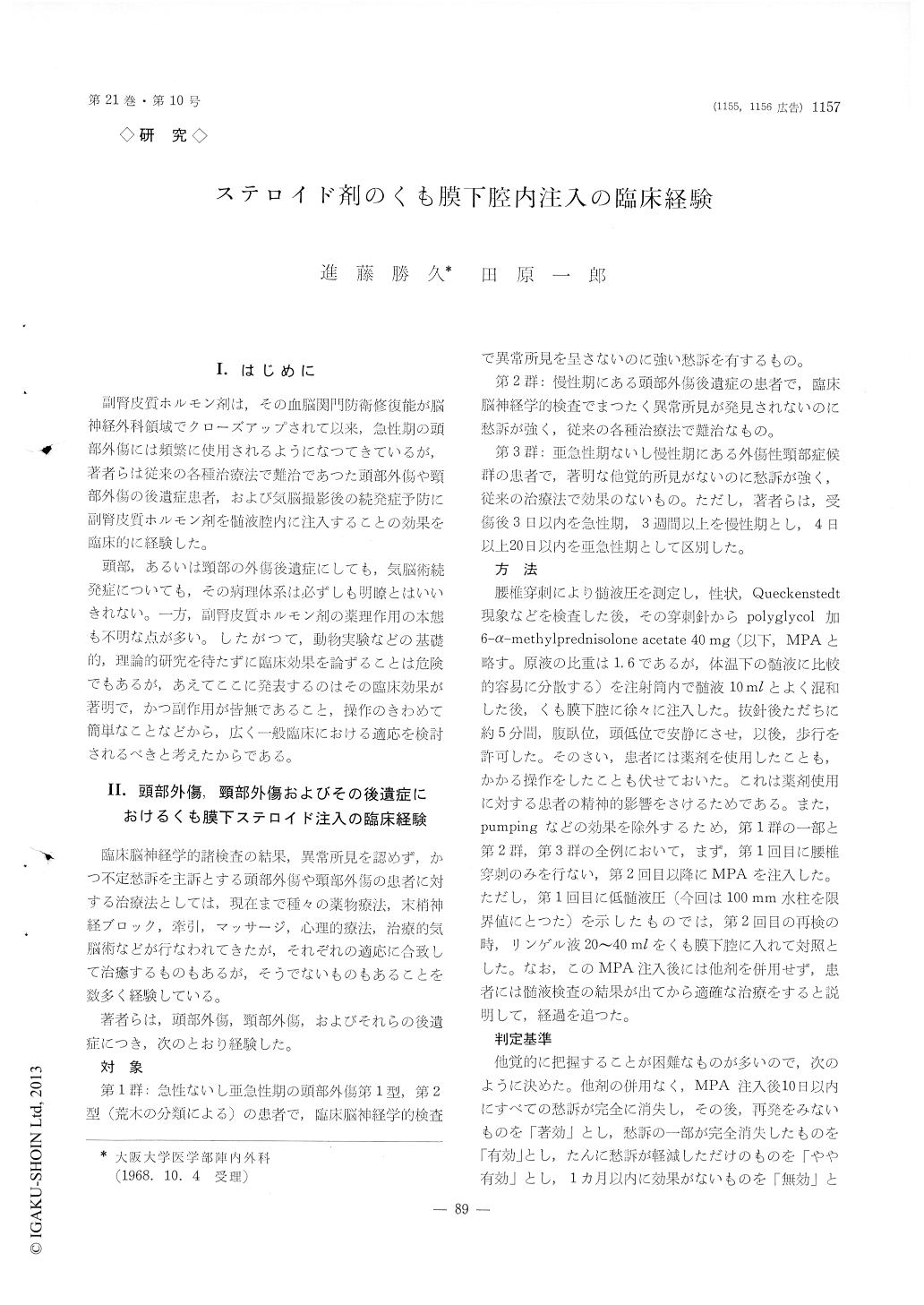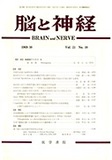Japanese
English
- 有料閲覧
- Abstract 文献概要
- 1ページ目 Look Inside
I.はじめに
副腎皮質ホルモン剤は,その血脳関門防衛修復能が脳神経外科領域でクローズアップされて以来,急性期の頭部外傷には頻繁に使用されるようになつてきているが,著者らは従来の各種治療法で難治であつた頭部外傷や頸部外傷の後遺症患者,および気脳撮影後の続発症予防に副腎皮質ホルモン剤を髄液腔内に注入することの効果を臨床的に経験した。
頭部,あるいは頸部の外傷後遺症にしても,気脳術続発症についても,その病理体系は必ずしも明瞭とはいいきれない。一方,副腎皮質ホルモン剤の薬理作用の本態も不明な点が多い。したがつて,動物実験などの基礎的,理論的研究を待たずに臨床効果を論ずることは危険でもあるが,あえてここに発表するのはその臨床効果が著明で,かつ副作用が皆無であること,操作のきわめて簡単なことなどから,広く一般臨床における適応を検討されるべきと考えたからである。
1) Thirty two patients with post-head and/or-neck traumatic syndrome without neurological abnor-mality were treated with intrathecal methylpre-dnisolone acetate (Depo-Medrol) 40 mg. The patients were kept on prone head-clown position at least for five minutes after intrathecal instillation of MPA 40 mg diluted with 10 ml of cerebrospinal fluid following lumbar puncture. The effect appeared bet-ween twelve hours and twenty days (7 clays on the average). Fourteen patients (44%) showed signifi-cant improvement within ten clays, thirteen patients (40. 6%) relative effect. The rate of effect is the highest (100%) in acute~subacute stage of head in-jury, higher (80%) in traumatic cervical syndrome and then 78. 6% in chronic stage of head injury.
2) All patients receiving lumber punctures with MPA did not ccmplaine of postlumbar puncture symptoms.
3) Ten patients for pneumoencephalography re-ceived intrathecal MPA with decreased duration of postpneumoencephalographic symptoms (around 11 hours).
4) There was no side-reaction on clinical view in all patients receiving intrathecal MPA.
5) The mechanism of posttraumatic syndrome and of postpneumoencephalographic symptoms and the indication of the steroids for these were discussed upon the view of the clinical effect of intrathecal MPA.

Copyright © 1969, Igaku-Shoin Ltd. All rights reserved.


